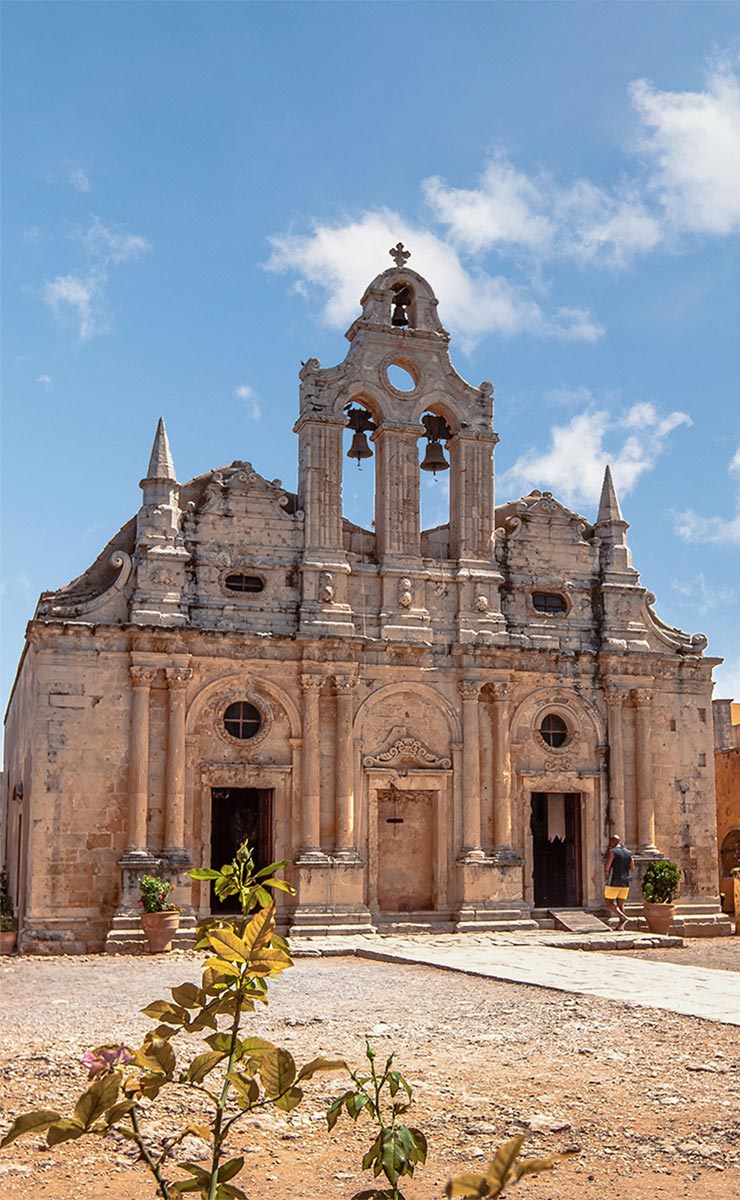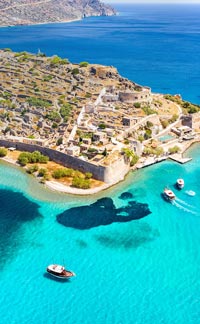About 50 km west of Heraklion (or a 40-minute bus trip from Rethymno to the west), near the center of Crete, the Arkadi Monastery in some ways can be considered the Alamo of Crete.
It's November, 1866. The Ottomans have arrived on Crete in force to put out the fires of rebellion springing up all over the island. Hundreds of villagers in the area flee to the sanctuary inside the monastery's walls. Eventually about 700 women and children, along with 260 Cretan resistance fighters under the leadership of Konstantinos Yiapoudakis find themselves surrounded by 2,000 Ottoman soldiers.
After a brief siege, the Turks breach the monastery's walls. Rather than allow those under his charge to submit to inevitable rape, slaughter, and enslavement, Yiapoudakis orders everyone into the monastery's powder magazine, which was in the wine cellar. Everyone cooperates, knowing the alternative. There they touch off the gunpowder. In the resulting explosion, nearly all of the Cretans die, taking with them many Turkish soldiers.
The only survivor was a small girl, who lived into old age in a nearby village. There is a bust of this woman, along with one of the abbot who touched the match to the gunpowder, on the monastery grounds. This event became one of the most famous in Cretan history, and led to UNESCO designating the monastery as a European Monument to Freedom.
The monastery's history goes back to the time of Venetian rule (1205-1669). It's construction was completed in 1587. It's thought to be named after the founder, a monk with the surname Arkadios. From the 1500's and onward it became one of the best-known monasteries in Crete. Its library was one of the largest in Greater Greece, and its monks spent a great deal of time copying priceless manuscripts.
The facade of the Venetian church features arches, protruding stone bosses and heraldic symbols, 8 slim Corinthian columns, and a soaring, cross-surmounted triple-belled tower incorporated into its peak.
There is an ossuary which preserves the skulls of some of the victims of the siege in a glass cabinet. It's part of a museum which houses icons, decorative wooden crosses and other religious artifacts, and weapons used in the siege. A massive, dead cypress tree in the courtyard still has scorch marks from the siege, and is still embedded with a bullet.
At present Arkadi Monastery is home to 11 monks.





















